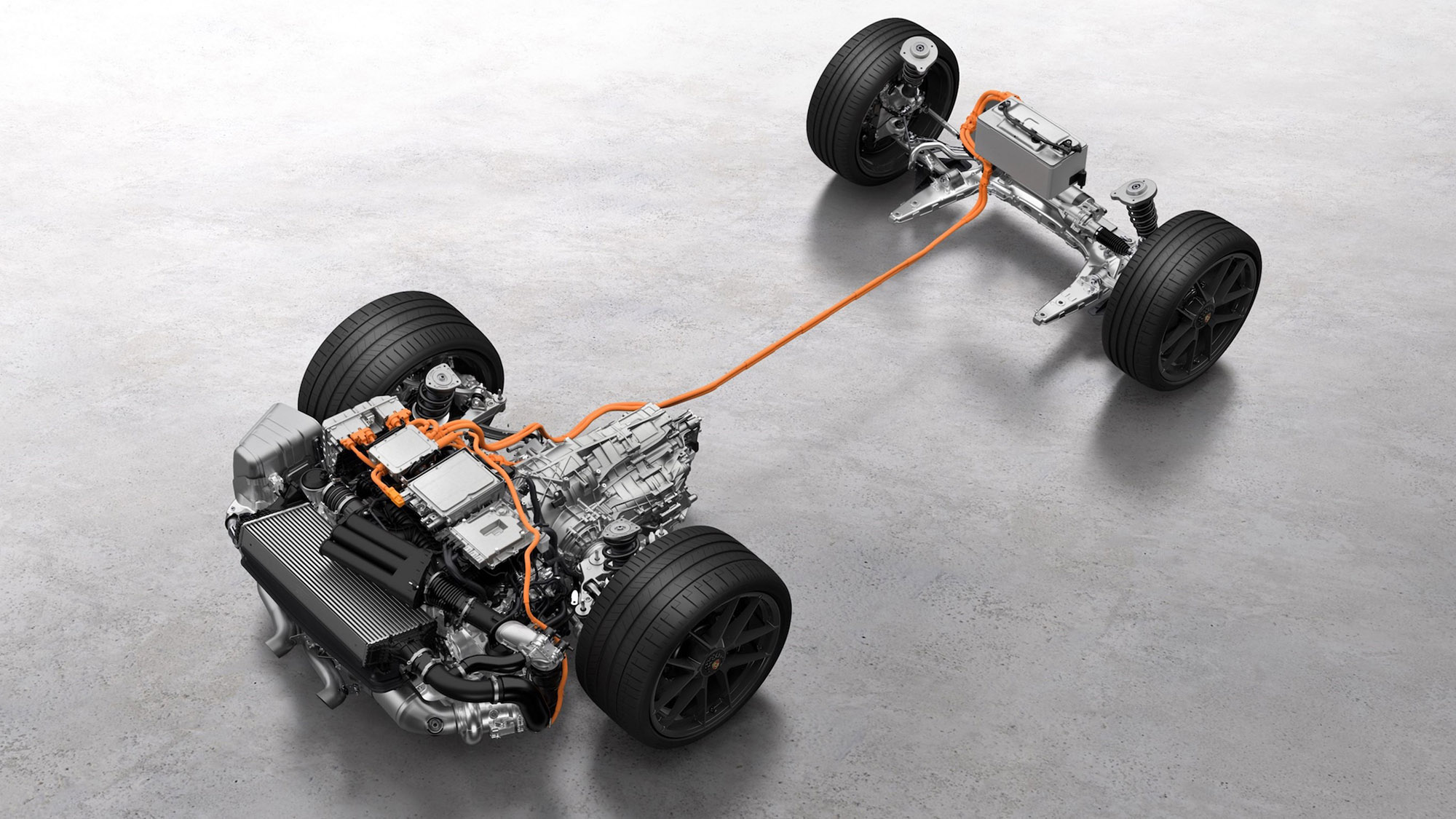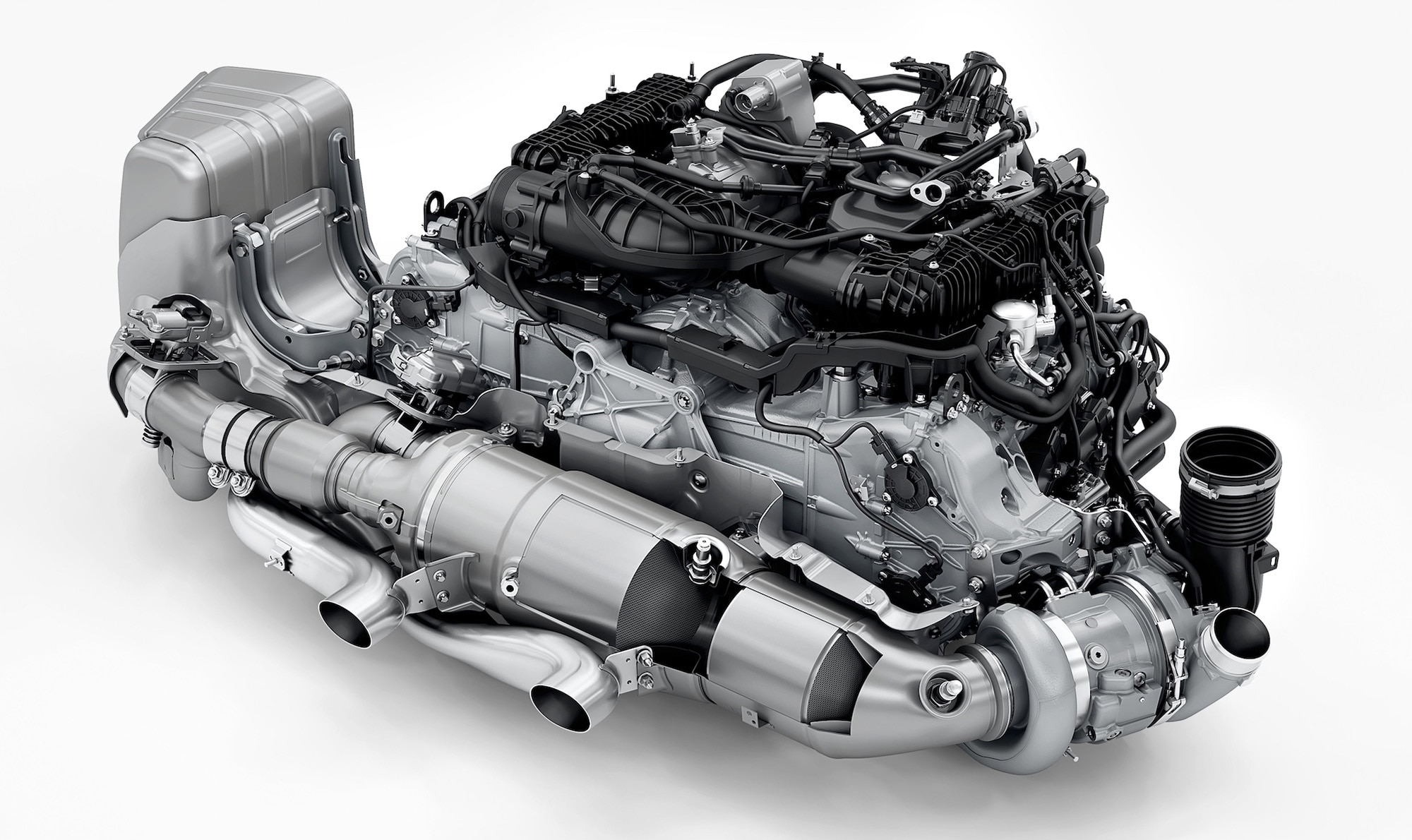The 2025 Porsche 911 Has Gone Hybrid
The 2025 Porsche 911 Carrera GTS is the first version of the legendary sports car to use a hybrid powerplant.
 Porsche
Porsche
Cars use more fuel the faster you drive. That's especially a problem for high-performance sports cars. New environmental regulations are cracking down on vehicle exhaust emissions — and burning more fuel typically generates greater emissions.
With the 2025 911 Carrera GTS, Porsche addresses this problem with a hybrid system that captures waste energy in a battery and sends it to electric motors for a boost of power when you accelerate. That's generally how hybrids work — but Porsche designed the 911's system to reduce emissions from the gasoline engine at full power. The company calls it T-Hybrid, which stands for Turbo hybrid. Here's how it works.
 Porsche
Porsche
One Electric Motor to Boost the Gas Engine
Porsche's T-Hybrid system pairs a 3.6-liter flat-six engine with two electric motors. The first motor sits between the engine and the automatic transmission, a layout similar to what's found in many mainstream hybrid cars.
On hard acceleration, this electric motor adds as much as 54 horsepower, augmenting the gasoline engine's output. The two complement each other, with the electric motor contributing most of its power at low speeds before the gasoline engine hits full stride.
On deceleration, the electric motor captures excess energy (that would otherwise be wasted as friction and heat in the brakes) and sends it to a lithium-ion battery in the 911's front trunk, storing it until the driver hits the accelerator again. In total, the gas engine and electric motor make 532 horsepower, an increase of nearly 60 horsepower over last year's non-hybrid 911 Carrera GTS.
 Porsche
Porsche
A Second Electric Motor to Help Power the Turbocharger
In a conventional vehicle, the turbocharger works like two turbines (essentially, fans) connected by a shaft. One turbine sits inside the exhaust system; as the gasoline engine pushes hot exhaust out through the muffler and tailpipe, this fast flow of fumes spins the turbine up to high speeds — sometimes faster than 200,000 rpm within some turbos.
This spinning force is transferred to the second turbine, which forces high-pressure air into the engine. The more air an engine takes in, the more gasoline it can burn, and the more horsepower it makes.
 Porsche
Porsche
The T-Hybrid system adds an electric motor to the turbocharger. With a conventional turbo, there is often a delay between the driver hitting the accelerator and sufficient air flowing through the engine for the system to generate a meaningful boost. In Porsche's T-Hybrid setup, that second electric motor gets the turbo up to speed almost instantly, giving a quick boost of power when the engine is working hardest to get the car rolling from a stop.
At higher speeds, the electric motor inside the turbo works in an opposite function, generating electricity from the fast-spinning turbine and sending it back into the battery to use later. Mercedes-AMG uses a similar arrangement on the C63.
 Porsche
Porsche
The Result: Instant Horsepower That Keeps Efficiency in Mind
Porsche says the 2025 911 Carrera GTS with the T-Hybrid system will accelerate from zero to 60 mph in 2.9 seconds, measurably quicker than the 3.2-second sprint in last year's GTS. Top speed is 194 mph, 2 mph faster than before.
Porsche has not yet published fuel-economy ratings for the 2025 911 Carrera GTS T-Hybrid, but if you were worried that a hybrid Porsche would give up much sports-car excitement, think again. The 2025 GTS outweighs the 2024 model by barely more than 100 pounds.
 Porsche
Porsche
And if your objections to a hybrid 911 are more philosophical, rest assured that, for 2025, Porsche is only installing the T-Hybrid in the $167,000 911 Carrera GTS. Base cars, as well as the ultra-high-performance Turbo and GT3 models, still rely on conventional turbos and high rpm to generate their power.
All vehicle pricing includes MSRP plus destination charges (set at the time of publication), and will be rounded to the nearest thousand.
Written by humans.
Edited by humans.
 Bob Sorokanich
Bob SorokanichBob Sorokanich is a car-obsessed journalist and editor who manages to maintain an old Mini Cooper and a love affair with automobiles while living in New York City. When he's not thinking about cars, he's riding his motorcycle, and when he's not riding his motorcycle, he's anticipating his next joy ride.
Related articles
View more related articles